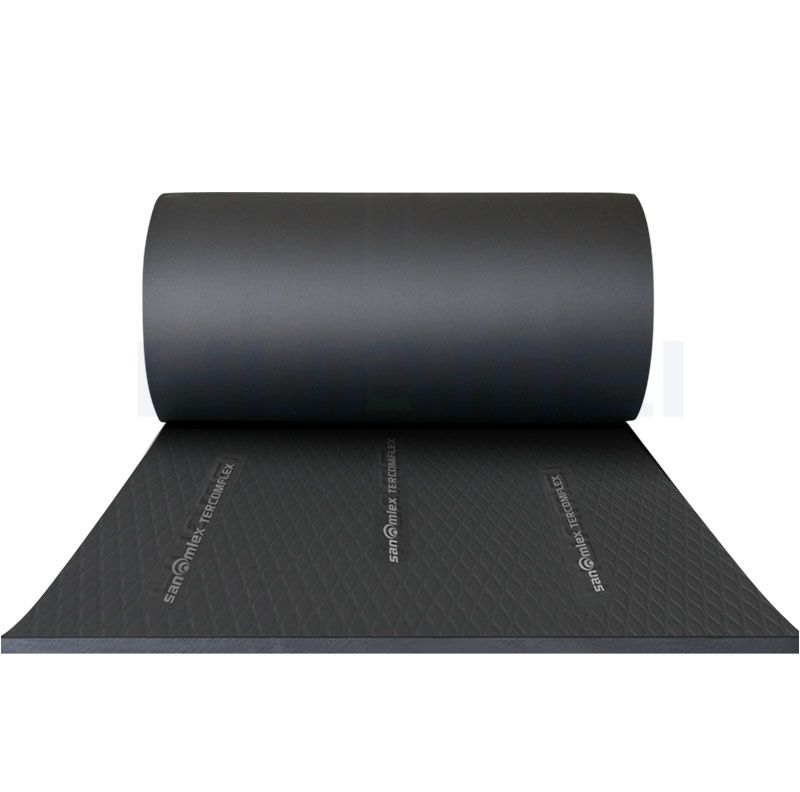Rubber and foam rubber are materials commonly used in various industries for different applications. While they share similarities, there are distinct differences between the two. In this article, we will explore the dissimilarities and shed light on the characteristics that set rubber and foam rubber apart. Understanding these disparities will help clarify their respective uses and guide you in selecting the appropriate material for your specific needs.

Composition and Structure
Rubber: Rubber is a natural or synthetic material primarily composed of polymers, specifically elastomers. It is typically derived from the sap of rubber trees (natural rubber) or manufactured through chemical processes (synthetic rubber). Rubber exhibits elasticity, which allows it to return to its original shape after being stretched or deformed.
Foam Rubber: Foam rubber, on the other hand, is a type of rubber that has been transformed into a cellular structure. It is created by introducing gas or chemicals into the rubber during the manufacturing process, resulting in a material with a sponge-like structure. The introduction of air or gas bubbles gives foam rubber its distinct foam-like appearance and properties.
Physical Properties
Rubber: Rubber is known for its resilience and flexibility. It has a dense and solid structure, providing strength and durability. Rubber has excellent tensile strength, allowing it to withstand stretching, compression, and bending without permanent deformation. It is resistant to abrasion, tear, and impact, making it suitable for applications that require toughness and durability.
Foam Rubber: Foam rubber, as the name suggests, has a porous structure due to the presence of air or gas bubbles. This cellular structure gives foam rubber its lightweight and compressible characteristics. Foam rubber is softer and less dense than solid rubber, offering enhanced cushioning, comfort, and insulation properties. It is capable of absorbing and distributing impact forces, making it ideal for applications that require shock absorption.
Applications
Rubber: Solid rubber is commonly used in applications that demand strength, resilience, and durability. It finds applications in the manufacturing of tires, conveyor belts, gaskets, seals, hoses, and various industrial components. Solid rubber is also utilized in the construction industry for roofing materials, flooring, and vibration isolation pads.
Foam Rubber: Foam rubber products are valued for their cushioning, insulation, and vibration-damping properties. They find extensive use in applications that require comfort, impact absorption, and thermal or acoustic insulation. Foam rubber is used in mattresses, pillows, upholstery, seat cushions, packaging inserts, protective padding, soundproofing materials, and sports equipment. It is also employed in automotive interiors, healthcare products, and a wide range of consumer goods.
Flexibility and Moldability
Rubber: Solid rubber is relatively inflexible and less moldable due to its dense and rigid structure. It retains its shape and resists deformation, which makes it suitable for applications where dimensional stability is essential. However, solid rubber can be shaped and molded using specialized techniques such as compression molding or injection molding.
Foam Rubber: Foam rubber is highly flexible and moldable due to its cellular structure. It can be easily compressed, bent, and shaped into various forms and contours. Foam rubber can be cut into different shapes and sizes using simple tools, allowing for customization and versatility in applications.
Comparison Table:
Related articles:How to Apply Epoxy Floor Paint?All things you need to know about Redispersible Polymer Powder (RDP) in tile adhesiveIs particle board stronger than wood?How to Polish Stainless Steel to Mirror Effect?Key Features to Consider When Selecting an Electric FenceHow does the quality and durability of granite headstones compare to other materials?Why are expandable container houses cheaper?To summarize the key differences between rubber and foam rubber, refer to the following comparison table:
Property | Rubber | Foam Rubber |
Composition | Solid and dense structure | Cellular and porous structure |
Physical Properties | Resilient and tough | Lightweight and compressible |
Applications | Industrial components, tires, gaskets | Mattresses, upholstery, packaging, soundproofing |
Flexibility and Moldability | Less flexible and moldable | Highly flexible and moldable |
Conclusion
In conclusion, while rubber and foam rubber share a common base material, their composition, structure, and physical properties differ significantly. Rubber is solid, resilient, and durable, suitable for applications that require strength and toughness. Foam rubber, with its cellular and porous structure, offers enhanced cushioning, comfort, and insulation properties. Understanding these differences is crucial in selecting the appropriate material for specific applications. Whether you require solid rubber for industrial components or foam rubber for cushioning and insulation, both materials have their unique benefits and play vital roles in various industries and everyday products.
Related articles:What is The Purpose of Fill in a Cooling Tower?What is Stone Coated Metal Roofing Tile?What is aluminum coil used for?Navigating the Spectrum of LVL Beam GradesWhat is the difference between wall cladding and curtain wall?The Timeless Elegance of Marble Statues: Sculpting History and BeautyNeoprene Bearing Pad: Versatile Solution for Structural Support





Comments
0Related Articles
By May
143
0
0
By Helen
137
0
0
By May
140
0
0
By Hou
136
0
0
By Hou
140
0
0
By CC
136
0
0
By May
137
0
0
By Hou
164
0
0